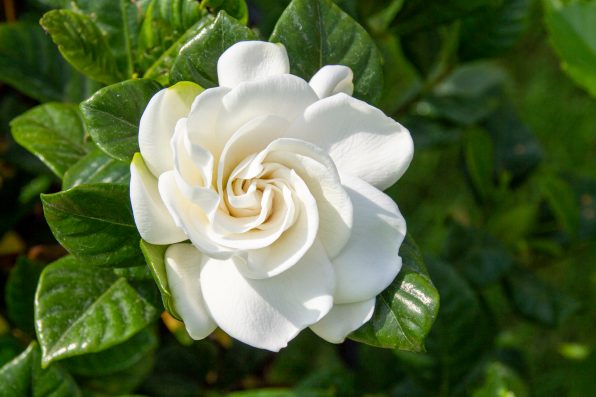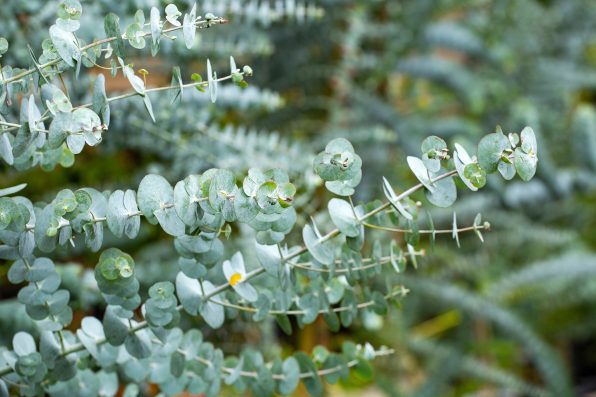Martha Stewart’s Not Eating Turkey This Year, But Here’s Her Recipe For The Perfect Turkey
Martha Stewart is one of America’s most beloved chefs, yet she’s not planning to chow down on Turkey this Thanksgiving. In fact, she’s not even going to be in the country for the upcoming holiday!
She has her own livestock at her property in Bedford, New York, and her farm in Maine. Nonetheless, Martha will be going the vegetarian route this year.
“Although I raise my own turkeys, they have been pardoned this year,” she said during a recent appearance on Today.
Martha detailed how she has a lot of vegetarians in her family, so her recipe for Brioche Stuffing-Filled Roasted Pumpkin, which she shared in the Today segment, satisfies everyone.
Instead of celebrating Thanksgiving in the States, she will be going to Rome with her grandchildren as well. She even put together a packed itinerary for her family to see a bunch of sites.
“We have such an itinerary. My grandchildren will get mad at me. They think they’re going on vacation for five days, but in fact, we are going to see everything. I’ve planned quite a trip,” Martha explained.
But while she may be skipping turkey this year, most Americans aren’t. Thankfully, Martha has already shared her recipe for the Perfect Roast Turkey in the past.
To try out Martha’s technique for yourself, which involves using a cheesecloth to keep the bird moist, check out the recipe below.
First, Start With The Brine

Alexander Raths – stock.adobe.com – illustrative purposes only
Sign up for Chip Chick’s newsletter and get stories like this delivered to your inbox.
She’s Worried Her Husband Will Divorce Her Over Her Daughter Lying To Make Him Look Like A Creep
This woman and her husband got married a bit more than five years ago, and her husband has a decent relationship with her 19-year-old daughter.
Her husband hasn’t stepped into a father role for her daughter, but he consistently helps her out and offers up advice. Her husband has never acted in a strange or inappropriate way when it comes to her daughter.
Last Thursday, she and her husband were in their living room watching a movie together, but they stopped it so her husband could get up to go to the bathroom.
The door to the bathroom was closed, and she could hear her husband knocking twice on the door to see if it was occupied.
“Literally, 3 knocks each time on the door a couple of seconds apart,” she explained. “It was loud enough for me to hear him knocking from the living room. The next moment, I heard screaming.”
“I rushed to the bathroom and saw my daughter completely naked, covering herself and yelling at my husband to get out. I didn’t see everything that happened, but what I saw after I heard yelling was my husband literally fell over his own feet and [was] struggling to get the bathroom door closed.”
“I asked my husband what happened, and he said he knocked; nobody answered, so he went in, and my daughter was naked in front of the mirror, and he tried to get out.”
She asked her daughter for her version of the events, and her daughter said her husband just barged into the bathroom.
She pointed out that her husband had knocked, but then her daughter stated she had headphones in and was listening to music, so she didn’t hear the knocking.

WavebreakMediaMicro – stock.adobe.com – illustrative purposes only, not the actual person
Sign up for Chip Chick’s newsletter and get stories like this delivered to your inbox.
Algae That Can Cause Memory Loss Has Been Spotted In Seafood
More than four million tons of seafood are fished from the tropical waters between the Philippines archipelago and delegated to global markets, making the country the 11th largest producer of seafood in the world.
However, scientists have recently discovered two species of microscopic marine algae that produce toxins within shellfish farmed in the region.
The finding has raised concerns for the coastal communities who depend on the industry to make a living.
“It is important to be aware of the toxic potential of these diatoms and to monitor them accordingly, but such efforts must begin by establishing their presence in our waters,” wrote the study authors.
Diatoms are single-celled algae that generate crystalline glass “shells” from hydrated silicon dioxide. These tiny living jewels are part of phytoplankton, which produces up to half of the Earth’s oxygen.
There are millions of diatom species in existence, but only 28 in the genus Pseudo-nitzschia are known to emit a harmful neurotoxin called domoic acid.
Shellfish, sardines, and anchovies can contain domoic acid because their diets are largely made up of marine algae like diatoms.
It is very rare for seafood affected by this toxin to reach our dinner tables. But since human activity has been causing marine algal blooms to become more frequent, the risk of seafood accumulating concerning levels of domoic acid has increased.
If seafood contaminated with too much domoic acid is eaten, it can lead to some serious side effects, from vomiting and diarrhea to amnesia and death.

freshidea – stock.adobe.com – illustrative purposes only
Sign up for Chip Chick’s newsletter and get stories like this delivered to your inbox.
A Dolphin In The Baltic Sea Was Caught Talking To Himself, Sparking Curiosity Among Researchers
A lone dolphin in the Baltic Sea has been recorded talking to himself, sparking curiosity among researchers.
They speculate that he might be expressing loneliness, potentially calling out in hopes of finding some friends.
Bottlenose dolphins (Tursiops truncatus) are known to be social animals that live in pods. But in September 2019, a single dolphin started hanging around the Svendborgsund channel, which is located south of Funen Island, Denmark, an area that is outside of the usual range of the species.
Locals know the dolphin as Delle. No other dolphins were seen nearby. Researchers deployed underwater recording devices to observe how the solitary dolphin’s presence affected porpoises near the harbor. They were shocked when they heard how noisy Delle was.
“Out of curiosity, I decided to add a recorder that captures actual sounds,” said Olga Filatova, the lead author of the study and a cetacean biologist at the University of Southern Denmark.
“I thought we might pick up a few distant whistles or something along those lines. I certainly didn’t anticipate recording thousands of different sounds.”
Over the course of 69 days between December 8, 2022, and February 14, 2023, the researchers detected a total of 10,833 sounds.
Many of them were related to communication and included 2,291 whistles, 2,288 burst-pulses, 5,487 low-frequency tonal sounds, and 767 percussive sounds.
Burst-pulses are a series of rapid-fire clicks sometimes associated with aggression. Among these noises, the dolphin also produced three distinctive whistles.

yeshaya – stock.adobe.com – illustrative purposes only
Sign up for Chip Chick’s newsletter and get stories like this delivered to your inbox.
The Rise Of Ancient Greek Culture Began A Century Earlier Than We Thought
Of all the ancient cultures and civilizations that scholars know most about, ancient Greece takes the cake. However, there are no surviving historical records between 1200 and 760 B.C.
This period has been referred to as a “dark age” due to the lack of written records following the societal and political collapse of much of the Mediterranean.
The Greek iron ages took place within this period. But since no documents are available, historians have only been able to work with a timeline that uses pottery styles from Athens as its basis.
It is believed that the iron ages started in 1025 and ended in 700 B.C. The Greek Renaissance occurred from 760 B.C. to 700 B.C., emerging in the last period of the iron ages.
During this era, the civilization experienced rapid economic and population growth. It saw the establishment of alphabetic writing, Greek city-states, and Greek colonies abroad. These major developments happened in just 60 years, making the period a rather extraordinary one.
But new research from Assiros and Sindos in northern Greece and Zagora on the island of Andros suggests that this timeline of the Greek iron age is wrong.
After studying pottery, researchers determined that the Greek dark ages were much shorter and the Greek Renaissance lasted much longer than previously thought.
The findings show that Greek society was quicker to recover from the societal collapse than what was assumed in the past.
In 2013, a team of archaeologists exploring the ancient town of Eleon, discovered a vessel in a shrine dating to the last half of the 12th century B.C.

tilialucida – stock.adobe.com – illustrative purposes only
Sign up for Chip Chick’s newsletter and get stories like this delivered to your inbox.
He Called Out A Teacher For Failing To Help Their Struggling Student, And Now The School District Is Unhappy With Him
This 30-year-old man has a job as a substitute teacher, and over the last few weeks, he has filled in for a teacher who encountered a family emergency.
He took over this teacher’s fourth-grade class, composed of 9 to 10-year-olds. One girl in the class named Lydia caught his attention, as it appeared to him that she was treated as a lost cause.
Everyone told him Lydia was just a terrible child. He picked up on her behavior problems, but he thought she was being mislabeled in a way that was not fair to her.
On the first day that he took over this class, he was told “carpet time” was how the students began their morning.
All the students would sit reading on the carpet for this chunk of time. There was a huge carpet on the floor of the classroom with a tinier rug in the middle of it.
“Lydia wanted to sit on the rug instead of the carpet, and when she didn’t get her way, she threw herself on the floor, flailing and crying,” he explained.
“I picked her up, placed her in a chair, and told her, “You’re going to stay here until you stop.” When she got up, I physically placed her back in the chair.”
“This repeated multiple times over the first few days—probably around 30 times in the first three days. Over time, though, her tantrums became less frequent because she realized that throwing a fit wouldn’t change the outcome.”
But on his 8th day of class, Lydia melted down and started yelling about how she didn’t want to sit in the chair because it was ugly.

Julia van der Westhuysen/peopleimages.com – stock.adobe.com – illustrative purposes only, not the actual person
Sign up for Chip Chick’s newsletter and get stories like this delivered to your inbox.
His Fiancée Thinks They Should Both Sleep With Someone Else Before Their Wedding In A Couple Weeks
Four years ago, this 28-year-old man started dating his 29-year-old fiancée, and he’s never had a reason to believe something is wrong in their relationship.
Their wedding is happening in just a couple of weeks, but last night, over dinner, his fiancée said they should both sleep with someone else before getting married.
“This stupid idea of hers completely blindsided me,” he explained. “I could tell that she had been thinking about it for some time and just waiting for the perfect moment to bring it up.”
“She said it would be healthy for our relationship, and our marriage would [be] off to a better start because of it.”
“She also claimed it would help get everything out of our systems. In the 4 years we’ve been together, I’ve never thought about being with someone else, but it just sucks to know she doesn’t feel the same way.”
When his fiancée noticed that he was not thrilled about the hall pass concept, she started to backtrack.
He basically stopped speaking to her when that conversation was over and went to sleep. Earlier this morning, his fiancée has been saying sorry like crazy, but it’s too late for that.
She can’t take back her words, and he’s upset. While he loves his fiancée with all of his heart, he feels betrayed.
“I’m not sure if she has a guy in mind or just wants a one-night stand,” he added. “We’re getting married in December, just a few weeks away.”

eduard – stock.adobe.com – illustrative purposes only, not the actual people
Sign up for Chip Chick’s newsletter and get stories like this delivered to your inbox.
She Left Her Best Friend’s Wedding Early After She Was Seated With Complete Strangers And Excluded From Their Mutual Friend Group
This 25-year-old woman and her best friend, who’s 26, have been close ever since they were in high school.
So, after her friend got engaged and she was invited to the wedding, she was both thrilled and honored to attend.
Now, she wasn’t included in her friend’s bridal party, but her friend promised that she’d have a good seat at the reception.
“And I thought I’d be with our mutual friends, or at least people I knew,” she recalled.
Yet, when she arrived at her friend’s nuptials, she realized she was wrong. She was actually seated at a table filled with complete strangers.
Some were distant relatives of her friend’s fiancé, and others were people she’d never met before in her entire life.
At the same time, the rest of their mutual friends were all sitting together at another table, laughing and having a wonderful time.
As you can probably imagine, she felt pretty hurt and left out of the celebration.
“I get it’s my friend’s wedding, and she has to make decisions about seating, but I thought she’d at least place me with people I knew, especially since we’re so close,” she admitted.

Dontsov – stock.adobe.com – illustrative purposes only, not the actual person
Sign up for Chip Chick’s newsletter and get stories like this delivered to your inbox.
How To Keep Your Ceramic And Terracotta Pots Safe For The Winter
Throughout the spring, summer, and even fall, countless people opt to display their gorgeous blooms in garden pots that line their porches or patios.
But now that the cooler months are upon us, it’s time to winterize these containers so they live to see another beautiful season.
Winter-proofing is an often forgotten-about task, yet it’s crucial to prevent your containers from cracking. Whether you have terracotta, plastic, thin-walled ceramic, or unsealed wood pots, they can all crack or even break after being exposed to the freezing and thawing patterns of winter.
Terracotta and ceramic pots are most likely to crack due to their porous nature. However, you can keep them safe and protected with only a few easy steps.
First, Clean Your Garden Pots Prior To Storing
To mitigate pests and diseases from festering in your containers during the cold months, be sure to clean them.
You should start by removing all the soil, and if it’s healthy, add it to some garden beds or your compost pile. Then, use a rag or soft brush to scrub the containers with warm, soapy water. Once you’re finished, rinse and repeat until all the dirt is gone.
And if you know that pests, fungus, or bacteria may be a problem, you can wash your pots with a bleach solution. Just mix one part bleach with nine parts water.
Finally, thoroughly dry your containers before you move on to storing them.

Marina – stock.adobe.com – illustrative purposes only
Sign up for Chip Chick’s newsletter and get stories like this delivered to your inbox.
This Rare Psychological Disorder Causes You To Fake Symptoms To Appear Ill, Injured, Or Impaired
Imagine faking an illness so well that even doctors are convinced. That is the essence of factitious disorder, which is also known as Munchausen syndrome. It’s all about fabricating symptoms or even tampering with medical tests to appear ill, injured, or impaired.
People with factitious disorder are not trying to invent medical problems for money or other perks, like getting out of work or winning a lawsuit. The gain is believed to be for primarily psychological reasons.
It is classified as a mental illness. People with this puzzling and complex condition are aware that they are causing their own symptoms or sicknesses, but they may not understand why they are behaving in this way or recognize that they have a problem.
Factitious disorder is hard to identify and difficult to treat. People with the disorder will go to great lengths to hide their deception and to receive care and attention.
Symptoms
The signs and symptoms of factitious disorder may include vague/inconsistent symptoms, conditions that worsen for no apparent reason, conditions that don’t respond to standard treatments, seeking treatments from several doctors or hospitals, and an eagerness to undergo testing and surgical operations.
In addition, they may argue with medical staff, be reluctant to let doctors talk to family/friends and have evidence of surgical scars on their bodies.
Types of Factitious Disorder
There are two types of factitious disorder. One of them is factitious disorder imposed on the self. It involves making up medical histories, exaggerating existing symptoms, faking symptoms altogether, tampering with medical tests, and inflicting self-harm.

brizmaker – stock.adobe.com – illustrative purposes only, not the actual person
Sign up for Chip Chick’s newsletter and get stories like this delivered to your inbox.
How Diamond Dust Could Hold the Key To Cooling Our Planet
Dropping diamond dust from an airplane and letting it scatter throughout the atmosphere could help cool the planet, according to newfound evidence.
A team of researchers from several institutions calculated which materials would be the most effective at cooling the planet via a stratospheric aerosol injection (SAI) method.
They used three-dimensional climate models to compare materials and found that a few hundred trillion dollars worth of diamond dust could work well.
Previously, research has shown that the warming of the Earth will worsen global weather patterns if temperatures continue on their current upward trend.
At this point, some experts argue that the only solution to this dire issue is to find a way to cool down the planet as quickly as possible. One idea has been to deploy millions of devices that extract carbon from the air.
However, if our planet is now past the point of return, removing carbon won’t help. Instead, it is necessary to inject aerosols into the atmosphere to reflect sunlight and heat back into space in order to cool down the Earth.
At first, sulfur dioxide gas was deemed the best candidate for the job. Since it is naturally spewed into the atmosphere by volcanoes, scientists have had plenty of opportunities to experiment with it.
So, they have a good idea of what would happen if humans started injecting it into the air themselves. Although the gas would likely counter the warming effects of excess greenhouse gases, it could also have undesired side effects.
Some of the consequences include damage to the ozone layer, disruption of weather patterns in the lower atmosphere, and a return of acid rain around the globe.

Glass Hat – stock.adobe.com – illustrative purposes only
Sign up for Chip Chick’s newsletter and get stories like this delivered to your inbox.
36 Years Ago, A Neighbor Found This Young Veterinary Student Stabbed In The Hall Of Her Apartment Building
Maria Caleel’s early life appeared perfect from the outside. She grew up in the Chicago suburbs with a plastic surgeon father and a former model mother on a five-acre estate.
Her affluent parents appeared in the local society pages, traveled to exotic locations, and enjoyed horses. Her father played polo; meanwhile, her mother participated in dressage events.
So, Maria fell in love with horses and started riding at just 6-years-old. She was known as a modest and amiable young woman, too, even though her family was wealthy.
“She got into horses at a very young age. Maria loved large animals, and she knew she wanted to be a vet,” her mother, Annette Caleel, recalled.
She went on to study pre-med at Brown University by age 16. Then, in 1987, she started studying at the University of Illinois College of Veterinary Medicine in Champaign-Urbana to fulfill her dream of becoming an equine veterinarian.
But while Maria was at the top of her class and excelling in Illinois, her life came to a screeching halt in March 1988 when she was murdered.
The Day Of Maria’s Murder
March 5 started off like any other day for 21-year-old Maria, who worked at her school’s veterinary clinic and cared for a premature foal. Then, at 10:00 p.m. that evening, she and some friends hung out in the Campus Town area.
They listened to music and grabbed pizza. Afterward, at about 1:30 a.m. on March 6, a friend brought Maria back to her third-floor apartment, which was located at 205 N. Lincoln in Urbana, just a few blocks north of campus.

Facebook – pictured above is Maria
Sign up for Chip Chick’s newsletter and get stories like this delivered to your inbox.
10 Fragrant Houseplants That Will Have You Ditching Your Air Fresheners
Ditch Your Air Fresheners For These 10 Fragrant Houseplants

Linda – stock.adobe.com – illustrative purposes only
Bringing the outdoors inside isn’t just about adding a touch of greenery to your living space. It’s also about infusing your home with natural fragrances that can lift your mood and transform your environment.
With these ten fragrant indoor plants, you can make your home smell like a lush garden– no air fresheners required.
1. Jasmine

Sahadat – stock.adobe.com – illustrative purposes only
Jasmine is a plant that can turn any room into a fragrant paradise. With its delicate white or yellow star-shaped blooms, jasmine emits a sweet, rich fragrance, especially after dusk.
This plant prefers bright, indirect sunlight and well-drained soil. It’s also important to water jasmine only when the topsoil feels dry to the touch to avoid overwatering.
Plus, regular pruning will help maintain its bushy appearance and encourage more blooms.
2. Gardenia

Photo 931969 © Igor Zhorov – Dreamstime.com – illustrative purposes only
Gardenias are famous for their large, creamy white flowers and dark green, glossy leaves. Their fragrance is intensely sweet and can fill an entire room.
Thriving in moderate temperatures and high humidity, gardenias require consistent moisture in the soil without being waterlogged.
They also benefit from regular misting to maintain the humidity levels they love.
3. Lavender

zea_lenanet – stock.adobe.com – illustrative purposes only
Lavender is sure to bring the serene beauty of the French countryside into your home.
Known for its silvery-green foliage and purple flower spikes, lavender emits a calming and soothing fragrance.
It needs a sunny spot and well-draining soil, as it’s susceptible to root rot in damp conditions. Watering should also be done sparingly and only when the soil is dry.
4. Scented Geraniums

whiteaster – stock.adobe.com – illustrative purposes only
Scented geraniums offer a unique variety of fragrances, from citrusy to spicy, and their textured leaves add to their charm.
They prefer bright light and well-drained soil. Also, watering should be moderate, allowing the soil to dry out between waterings. This plant’s flowers are small but pretty, often overshadowed by the attractively patterned leaves.
5. Eucalyptus

Luis Echeverri Urrea – stock.adobe.com – illustrative purposes only
Eucalyptus plants will definitely bring a fresh, crisp aroma to your home. With their fast-growing habit and round, silver-green leaves, they make a striking indoor plant.
They thrive in full sun and require regular watering. Pruning is also essential to keep them at a manageable size and to encourage the growth of new, fragrant leaves.
6. Mint

spyrakot – stock.adobe.com – illustrative purposes only
Mint is an incredibly easy-to-grow plant with a refreshingly sharp scent. It has sprawling green stems with bright, oval leaves. And mint plants prefer moist soil and partial sunlight, making them perfect for indoor gardens.
However, they tend to spread rapidly. So, it’s advisable to plant them in containers to control their growth.
7. Citrus Trees

MyJuly – stock.adobe.com – illustrative purposes only
Indoor citrus trees, like dwarf lemons or oranges, not only produce fragrant flowers but also bear fruit!
These trees require bright sunlight and consistent watering to thrive. But their glossy green leaves and the fragrance of blossoms make them a delightful addition to any room that’s totally worth the extra work.
8. Stephanotis

irairopa – stock.adobe.com – illustrative purposes only
Stephanotis, also known as Madagascar jasmine, features waxy, tubular flowers that exude a sweet, intense fragrance.
These blooms enjoy bright, indirect light and need water when the soil feels dry to the touch. Its vining nature also makes it ideal for hanging baskets or trellises.
9. Rosemary

New Africa – stock.adobe.com – illustrative purposes only
Rosemary is a wonderful aromatic herb with needle-like leaves and woody stems. It produces a pine-like fragrance and small, pale blue flowers.
This herb loves full sun and well-drained soil, and it should be watered only when the soil is dry. And, of course, rosemary is not only great for adding fragrance but also for cooking.
10. Sweet Bay

Brent Hofacker – stock.adobe.com – illustrative purposes only
Last but not least, Sweet Bay, or bay laurel, is known for its noble fragrance and glossy, dark green leaves.
This plant needs full sun to partial shade and well-drained soil. Watering should also only be done when the top inch of the soil feels dry.
Sweet bay is a popular culinary herb, too, used in a variety of dishes for its subtle flavor.
Scotland’s Last Plague Shows There Was A Lot Of Compassion For The Dead, Even Though It Put The Living At Risk
The Black Death, which was caused by the bacterial agent Yersinia pestis, struck Europe in the mid-14th century. Scotland’s final brush with the bubonic plague occurred from 1644 to 1649.
Researchers from the University of Aberdeen in Scotland have confirmed for the first time that the bacteria responsible for the bubonic plague was present as far as north as Aberdeen during the late 1640s. It was a time when the Scottish population was ravaged by both civil war and disease.
They also discovered surprising acts of care for the dead, even in the face of chaos. The team mapped the plague’s spread in Scotland over the six-year-long epidemic and examined remains excavated from a site in 1987 in York Place, Aberdeen.
The site contained a series of plague pits that were created during the 1647 to 1648 outbreak. The team identified ancient DNA of Yersinia pestis in human remains from one of the plague pits.
“This final Scottish outbreak was thought to have started as a result of infected Scottish soldiers returning from the siege of Newcastle in October 1644,” said Marc Oxenham, the lead author of the study and a professor at the university.
“Initially, in the borders, it spread north over the following years through Central Scotland, Perthshire, and Angus.”
According to an entry in the Council Register of the Burgh, Aberdeen was preparing for the plague’s return by April 1647. The last outbreak in the city happened almost 100 years prior, in 1545.
By this time, Scottish cities and towns were highly experienced in combating the plague. Still, the effects were devastating.
In many regions, populations were facing economic hardship and war, along with the complications of a terrible disease.

Nataliya Hora – stock.adobe.com – illustrative purposes only
Sign up for Chip Chick’s newsletter and get stories like this delivered to your inbox.























